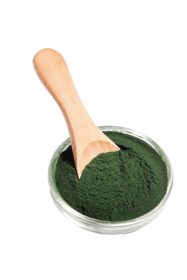Nutraceuticals can include:
 07 May 2024
07 May 2024
Understanding the dynamics of gut microbiota and how this impacts the intestinal health of poultry is a key aspect for production. The intricate interplay between the intestinal microbiota and the integrity of the intestinal barrier is fundamental to the overall health and performance of poultry. Here, we delve into the mechanisms underpinning intestinal health, focusing on the pivotal roles of gut microbiota modulation and barrier function maintenance in poultry health.
Gut Microbiota and Intestinal Health
 The gut microbiota, composed of a myriad of microorganisms residing in the gastrointestinal tract, plays a paramount role in maintaining intestinal homeostasis. In poultry, the intricate balance of gut microbiota is influenced by various factors including diet, environment, and stress. Disruption of this balance, termed dysbiosis, can lead to a cascade of detrimental effects on intestinal health, predisposing poultry to a range of intestinal disorders.
The gut microbiota, composed of a myriad of microorganisms residing in the gastrointestinal tract, plays a paramount role in maintaining intestinal homeostasis. In poultry, the intricate balance of gut microbiota is influenced by various factors including diet, environment, and stress. Disruption of this balance, termed dysbiosis, can lead to a cascade of detrimental effects on intestinal health, predisposing poultry to a range of intestinal disorders.
Factors Influencing Gut Microbiota
Numerous factors can perturb the equilibrium of gut microbiota in poultry. These include dietary factors such as antinutritional components, exposure to heavy metals and toxins, as well as the administration of antibiotics. The consequences of such disturbances extend beyond the gut, impacting immune function, nutrient absorption, and overall performance of poultry.
Nutraceuticals and Gut Health
Nutraceuticals can include:
 Nutraceuticals, including probiotics, prebiotics, and organic acids, have emerged as promising alternatives to antibiotics in promoting gut health in poultry. These dietary supplements modulate the gut microbiota, bolstering beneficial microbial populations while inhibiting pathogenic species. Additionally, nutraceuticals contribute to the maintenance of intestinal barrier integrity, mitigating the risk of intestinal permeability and associated inflammatory responses.
Nutraceuticals, including probiotics, prebiotics, and organic acids, have emerged as promising alternatives to antibiotics in promoting gut health in poultry. These dietary supplements modulate the gut microbiota, bolstering beneficial microbial populations while inhibiting pathogenic species. Additionally, nutraceuticals contribute to the maintenance of intestinal barrier integrity, mitigating the risk of intestinal permeability and associated inflammatory responses.
Intestinal Barrier and Tight Junctions
Enterocytes form the cornerstone of the intestinal mucosal monolayer, serving as guardians against external threats. These enterocytes are intricately connected by tight junctions (TJs), forming a continuous belt of intimate contacts. Comprising integral transmembranes such as occludin and claudins, along with peripheral membranes like zonula occludens, these TJs seal the paracellular space, regulating the permeability of the intestinal barrier. By preventing the transit of microorganisms, toxins, and antigens from the intestinal lumen into systemic circulation, these proteins play a pivotal role in preserving intestinal integrity.
Regulation Mechanisms
The formation and function of tight junctions are tightly regulated by intracellular signal transduction pathways. Signaling cascades involving Protein kinase C (PKC), A (PKA), and G (PKG), as well as Phosphatase-Rho, myosin light chain kinase (MLCK), and MAPK pathways, orchestrate the assembly and maintenance of tight junctions. Disruptions to these junctions, triggered by bacterial factors such as lipopolysaccharide (LPS), can culminate in increased intestinal permeability, leading to conditions like leaky gut syndrome.
Biomarkers and Intestinal Health
The intricate interplay between epithelial barrier function, intestinal inflammation, and the microbial environment underscores the need for reliable biomarkers to assess intestinal health. Biomarkers related to oxidative stress, immune activity, and intestinal permeability offer valuable insights into gut health status. From antioxidant enzymes like superoxide dismutase (SOD) to indicators of immune function such as secretory IgA (SIgA), these biomarkers provide a window into the physiological state of the intestine. Additionally, markers of intestinal permeability, including gene expression of tight junction proteins and bacterial translocation, serve as valuable tools for evaluating gut integrity and function.
Future Directions
As research continues to unravel the complexities of intestinal health, the quest for novel biomarkers and evaluation techniques remains ongoing. Non-invasive biomarkers, such as those detectable in fecal samples, offer promise for streamlined monitoring of intestinal health in poultry. By leveraging advancements in biomarker research and developing robust inflammatory gut models, stakeholders can enhance our understanding of intestinal function and pave the way for proactive management strategies. Ultimately, the pursuit of intestinal health biomarkers that are accessible, cost-effective, and reflective of gut physiology remains paramount in advancing poultry welfare and performance.
You may also like to read: “Probiotics and Essential Oils as AGP Alternatives in Poultry”
Read more about this topic at aviNews International
Subscribe now to the technical magazine of animal nutrition
AUTHORS

Nutritional Interventions to Improve Fertility in Male Broiler Breeders
Edgar Oviedo
The Use of Organic Acids in Poultry: A Natural Path to Health and Productivity
M. Naeem
Synergistic Benefits of Prebiotics and Probiotics in Poultry, Swine, and Cattle
Gustavo Adolfo Quintana-Ospina
Hybrid Rye Potential in Laying Hen Feed Rations
Gwendolyn Jones
A day in the life of phosphorus in pigs: Part I
Rafael Duran Giménez-Rico
Use of enzymes in diets for ruminants
Braulio de la Calle Campos
Minerals and Hoof Health in the Pregnant Sow
Juan Gabriel Espino
Impact of Oxidized Fats on Swine Reproduction and Offspring
Maria Alejandra Perez Alvarado